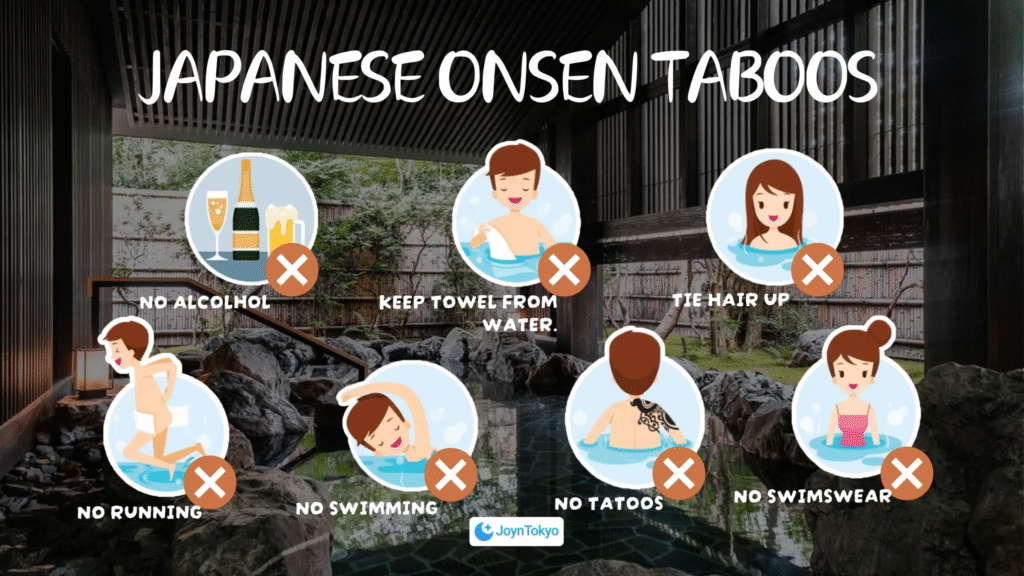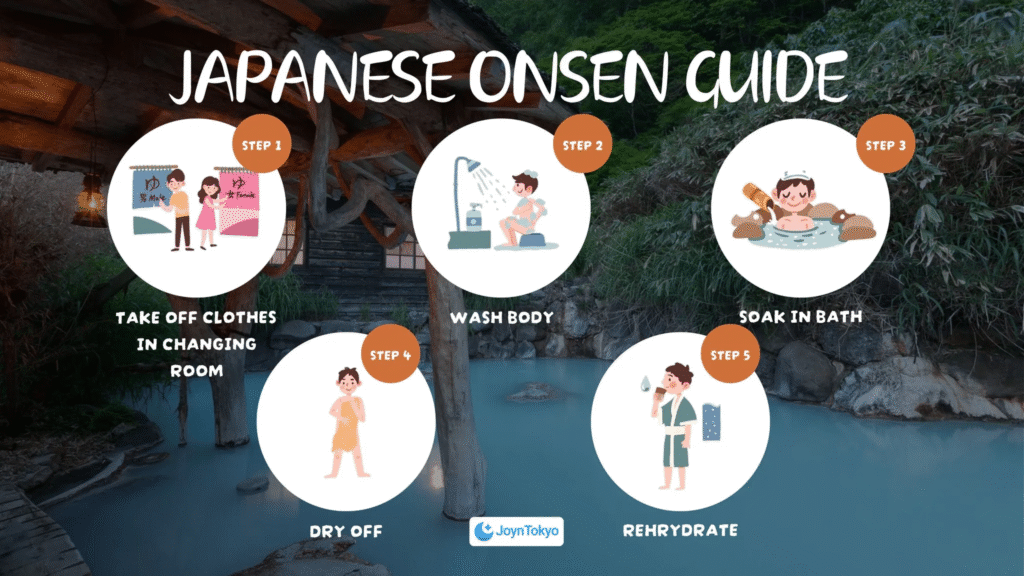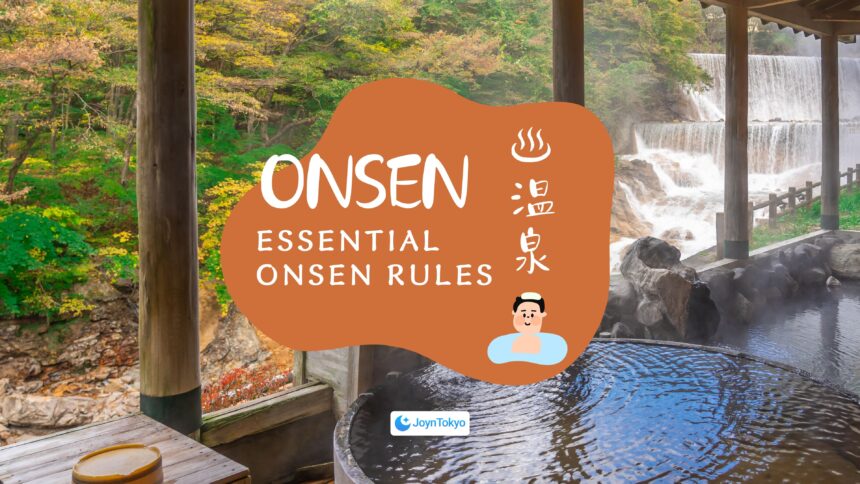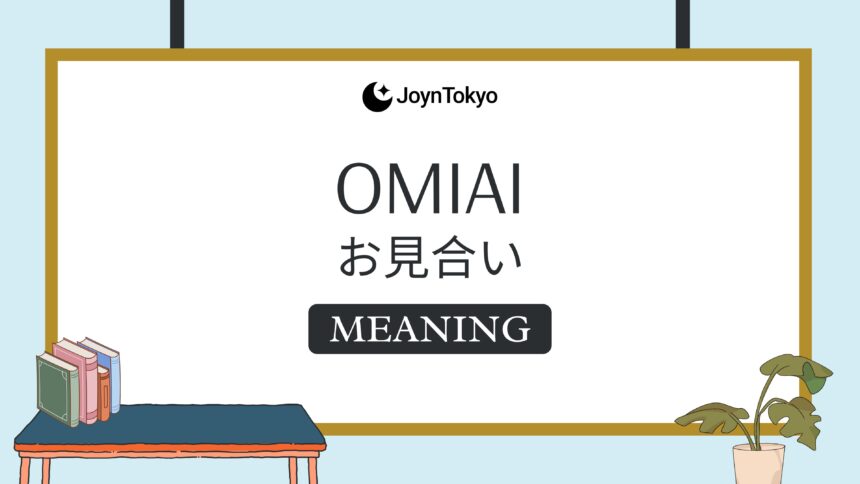Bathing in a Japanese onsen feels like entering another dimension—quiet steam, mineral-rich water, and an unspoken code of respect. If you master the etiquette once, every soak from neon city super-sento to remote volcanic rotenburo will welcome you like home. This guide distills the essentials so you can bathe with confidence rather than confusion.
Understanding the Spirit of Onsen Etiquette
Japan’s bathing culture entwines cleanliness, harmony, and centuries-old Shinto purification. Etiquette is not about restriction; it is a collective agreement that keeps the water clear and the mind calm.

1. Cleanliness Is Collective Courtesy
One unwashed body clouds the tub for everyone. Soap and rinse meticulously before entering so the mineral water stays crystal clear all day.
2. Modesty Without Fabric
Swimwear is banned because fibers and detergents contaminate the spring. Nudity is normal—people avert their gaze, and a hand-towel offers discreet cover while walking.
3. Quiet Sustains Harmony
Trickling water and wooden echoes create a meditative soundscape. Keep conversations low and laughter gentle to preserve the spell.
Preparing Before You Arrive

A stress-free visit begins long before your shoes leave the genkan.
1. Check Tattoo Policies
Some rural baths still refuse ink linked to the yakuza past. Many urban facilities now post “tattoo-friendly” notices or rent waterproof patches—call ahead or check the website.
2. Pack Light
Most onsens supply soap, shampoo, and dryers. Bring a small wash towel, a large bath towel, hair ties, and a plastic bag for the wet gear—nothing more.
3. Hydrate, Skip Alcohol
Hot water dehydrates fast. Drink water beforehand and save the craft beer until after you finish.
In the Changing Room
Your locker-room manners set the tone for what follows.
1. Stow Shoes and Slippers Neatly
Place footwear heel-out in the rack; treat even slippers with care.
2. Stay Compact at the Locker
Fold clothes, avoid sprawling on benches, and pocket your phone once you lock up—devices are forbidden past this point.
3. Handle the Modesty Towel Correctly
The towel is for washing and cover, not for the tub. Once immersed, rest it on your head or the wooden edge.
Inside the Bath
Steam swirls; etiquette guides every move.
1. Soap, Rinse, Then Soak
Sit on a low stool, lather head-to-toe, and rinse off every bubble before standing.
2. Keep Hair and Towels High
Tie long hair and keep the towel out of the water—locals often fold it into a cool forehead compress.
3. Enter Slowly, Exit Gradually
Ease in so circulation adjusts; stand carefully when leaving to avoid dizzy spells.
4. Respect Temperature Zones
Large baths may offer very hot, lukewarm, cold plunge, and open-air pools. Acclimate gradually—seasoned bathers will notice.
After the Bath
The experience continues beyond the pool.
1. Pat Dry Before the Locker Room
A quick pat keeps floors safe for others and saves staff endless mopping.
2. Skip the Post-Bath Soap
Onsen minerals benefit skin; a rinse is fine, but re-lathering negates the effect.
3. Rehydrate Quietly
Milk or ion drinks await near vending machines. Avoid strong perfumes that overpower the subtle hinoki aroma.
Special Situations
Edge cases need extra care.
1. Tattoos
Small designs can hide under 8 × 10 cm waterproof patches; full sleeves fare better at tattoo-friendly baths or private kashikiri rooms.
2. Mixed-Gender Baths (Konyoku)
Rare mountain onsens may issue thin bath gowns for women while men bathe nude. Always follow posted rules.
3. Bathing with Children
Kids under seven may enter either gender’s bath with a parent. Teach them to sit while washing and speak softly—floating toys belong only in family tubs.
Key Takeaways

Japanese onsen etiquette rests on three pillars—cleanliness, tranquility, shared respect. Arrive prepared, wash thoroughly, keep fabrics out of the water, move quietly, and follow local tattoo or mixed-bath rules. Do that, and every future soak will feel like your own private paradise.





